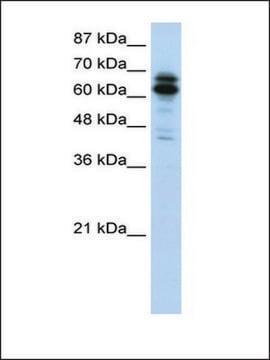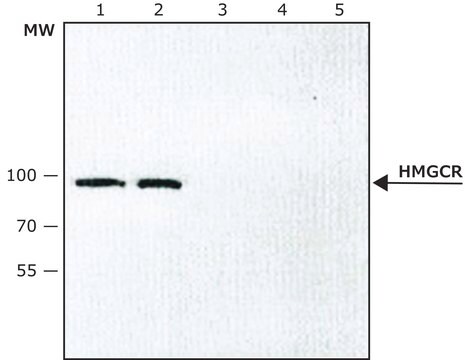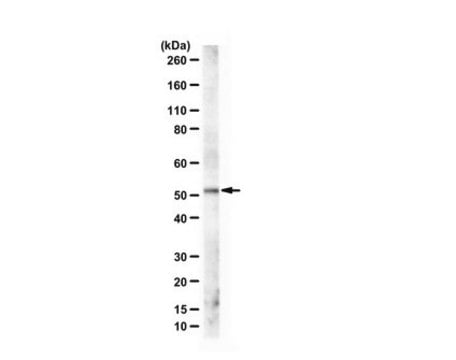MAB11004
Anti-hnRNP Q Antibody, clone 7A11.2
clone 7A11.2, from mouse
Synonim(y):
heterogeneous nuclear ribonucleoprotein Q-like, Synaptotagmin-binding, cytoplasmic RNA-interacting protein, Glycine- and tyrosine-rich RNA-binding protein, GRY-RBP, NS1-associated protein 1
About This Item
Polecane produkty
pochodzenie biologiczne
mouse
Poziom jakości
forma przeciwciała
purified immunoglobulin
rodzaj przeciwciała
primary antibodies
klon
7A11.2, monoclonal
reaktywność gatunkowa
mouse, rat, human
metody
immunocytochemistry: suitable
western blot: suitable
izotyp
IgG1κ
numer dostępu NCBI
numer dostępu UniProt
Warunki transportu
wet ice
docelowa modyfikacja potranslacyjna
unmodified
informacje o genach
human ... SYNCRIP(10492)
Opis ogólny
Immunogen
Zastosowanie
Immunocytochemistry Analysis: 1:500 dilution from a representative lot detected hnRNP Q in NIH/3T3, A431, and HeLa cells.
Jakość
Western Blot Analysis: 1 µg/mL of this antibody detected hnRNP Q on 10 µg of NIH/3T3 cell lysate.
Opis wartości docelowych
Postać fizyczna
Inne uwagi
Not finding the right product?
Try our Narzędzie selektora produktów.
Kod klasy składowania
12 - Non Combustible Liquids
Klasa zagrożenia wodnego (WGK)
WGK 1
Temperatura zapłonu (°F)
Not applicable
Temperatura zapłonu (°C)
Not applicable
Certyfikaty analizy (CoA)
Poszukaj Certyfikaty analizy (CoA), wpisując numer partii/serii produktów. Numery serii i partii można znaleźć na etykiecie produktu po słowach „seria” lub „partia”.
Masz już ten produkt?
Dokumenty związane z niedawno zakupionymi produktami zostały zamieszczone w Bibliotece dokumentów.
Nasz zespół naukowców ma doświadczenie we wszystkich obszarach badań, w tym w naukach przyrodniczych, materiałoznawstwie, syntezie chemicznej, chromatografii, analityce i wielu innych dziedzinach.
Skontaktuj się z zespołem ds. pomocy technicznej








